Instruction
7 techniques to improve your putting alignment
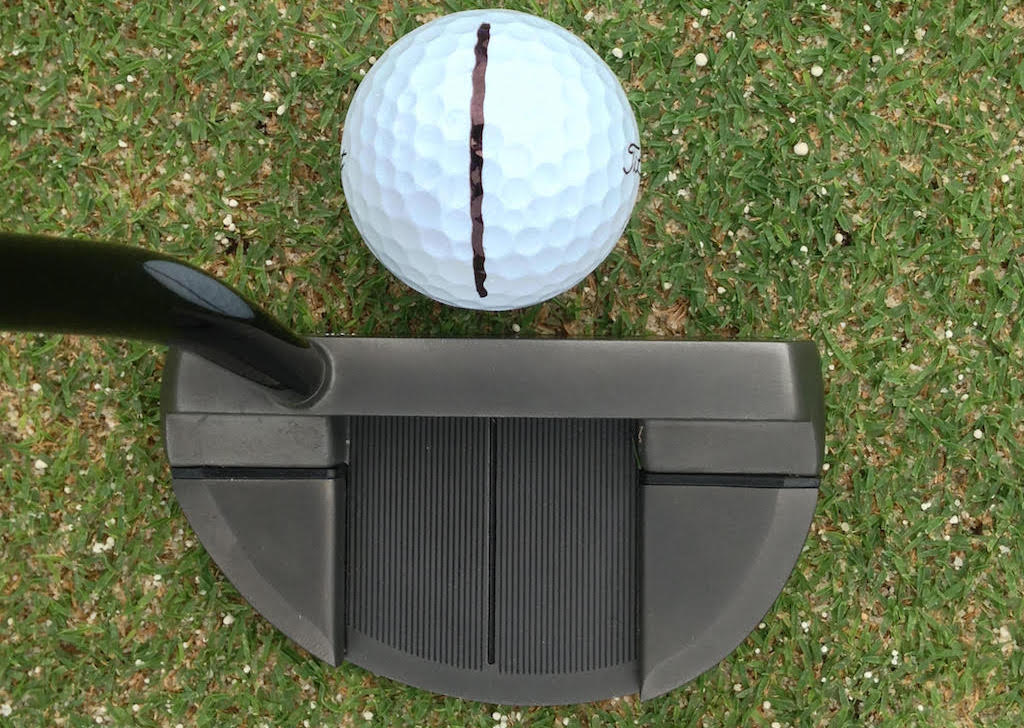
Aiming a golf club to your target, in this case the putter, is like shooting a gun while looking at the barrel from the side. It would be so much easier if we could putt side-saddle like Sam Snead did. The rules of golf prohibit such action, however, so we’re left to find effective ways to align ourselves on the greens that abide by the USGA rules.
In my studio at Vidanta in Puerto Vallarta, I utilize the SAM PuttLab, which measures more than 20 different putting factors. With it, I’ve seen first-hand just how difficult it is to align the putter. And it’s not just average golfers. My studies have shown that even PGA Tour players struggle to aim the putter exactly where they intend.
So what chance does the average golfer have? With the 7 techniques I write about below, a much better chance than he or she does now.
Before we get to the techniques, I want to offer a SAM PuttLab screenshot from one of the better putters on the PGA Tour. Note that this player consistently aims the putter 2.5 degrees to the right of his intended target. His setup necessitates a change in face alignment on the way back and through impact in order to begin the ball in the correct direction.
Touring professionals have spent years honing and ingraining repeatable strokes, and it may not be best for them to change the way they’ve been putting. They’ve earned their stripes, so as long as they return the putter to a position at impact that starts the ball on their intended line, where they initially aim can be of little consequence.
Amateurs, on the other hand, should work to limit the amount of manipulations in their strokes. This will give them the best chance possible to start the ball on their intended line.
Ready to give it a shot? Here are my 7 best techniques to improve your putting alignment.
Put a line on your ball
It’s easy to understand why drawing a line on your ball and aiming it from behind can help your putting alignment. As we mentioned before, it’s easier to aim from behind the barrel than beside it. If you watch golf closely on television, you’ll notice a majority of top PGA Tour players use a line on their golf ball for this purpose.
Use a putter with a line
The more lines you have perpendicular to the bottom of the putter face, the easier it will be to line up correctly. Some people prefer one line, while others prefer multiple lines. Whatever you’re preference, there’s no question that the majority of golfers will aim their putter better if it has a line on it.
Use other clubs to form railroad tracks
As with your long game, placing a few clubs on the ground will help you to “see” what square, open, and closed looks like in relation to your target will help your alignment. Again, you don’t have to be perfectly aligned, but if you think you are lined up one way (say, opened), but are actually lined up another (say, closed), I can guarantee you’ll run into trouble.
Audit your right-hand grip
For whatever reason, I commonly see people’s right hand too much “on top” of the grip as shown in this photo. Remember, whenever your right hand is in opposition with your left hand, poor alignment will generally follow.
Make sure your shoulders are square
Use a club under your armpits, like I’m demonstrating above, to see where your shoulders are in relation to your feet and target line. Open or closed shoulders are an issue that are usually affected by your grip.
Be wary: Golfers with left-hand low grips tend to have closed shoulders at address, while golfers who use the traditional, right-hand low putter grip tend to have opened shoulders.
Monitor your right forearm
If the right forearm rides too high then you’ll tend to be too open to your target during your setup. Make sure your right forearm is in line with the club shaft and the left forearm at address. This will increase your odds of aiming where you want to aim more consistently.
Set up while looking at the hole and trust
When all else fails, just look at the hole, set your putter down, and fire. You’ll be aligned better than you think.
- LIKE331
- LEGIT65
- WOW20
- LOL20
- IDHT9
- FLOP16
- OB11
- SHANK78
Instruction
The Wedge Guy: The easiest-to-learn golf basic

My golf learning began with this simple fact – if you don’t have a fundamentally sound hold on the golf club, it is practically impossible for your body to execute a fundamentally sound golf swing. I’m still a big believer that the golf swing is much easier to execute if you begin with the proper hold on the club.
As you might imagine, I come into contact with hundreds of golfers of all skill levels. And it is very rare to see a good player with a bad hold on the golf club. There are some exceptions, for sure, but they are very few and very far between, and they typically have beat so many balls with their poor grip that they’ve found a way to work around it.
The reality of biophysics is that the body moves only in certain ways – and the particulars of the way you hold the golf club can totally prevent a sound swing motion that allows the club to release properly through the impact zone. The wonderful thing is that anyone can learn how to put a fundamentally sound hold on the golf club, and you can practice it anywhere your hands are not otherwise engaged, like watching TV or just sitting and relaxing.
Whether you prefer an overlap, interlock or full-finger (not baseball!) grip on the club, the same fundamentals apply. Here are the major grip faults I see most often, in the order of the frequency:
Mis-aligned hands
By this I mean that the palms of the two hands are not parallel to each other. Too many golfers have a weak left hand and strong right, or vice versa. The easiest way to learn how to hold the club with your palms aligned properly is to grip a plain wooden ruler or yardstick. It forces the hands to align properly and shows you how that feels. If you grip and re-grip a yardstick several times, then grip a club, you’ll see that the learning curve is almost immediate.
The position of the grip in the upper/left hand
I also observe many golfers who have the butt of the grip too far into the heel pad of the upper hand (the left hand for right-handed players). It’s amazing how much easier it is to release the club through the ball if even 1/4-1/2″ of the butt is beyond the left heel pad. Try this yourself to see what I mean. Swing the club freely with just your left hand and notice the difference in its release from when you hold it at the end of the grip, versus gripping down even a half inch.
To help you really understand how this works, go to the range and hit shots with your five-iron gripped down a full inch to make the club the same length as your seven-iron. You will probably see an amazing shot shape difference, and likely not see as much distance loss as you would expect.
Too much lower (right) hand on the club
It seems like almost all golfers of 8-10 handicap or higher have the club too far into the palm of the lower hand, because that feels “good” if you are trying to control the path of the clubhead to the ball. But the golf swing is not an effort to hit at the ball – it is a swing of the club. The proper hold on the club has the grip underneath the pad at the base of the fingers. This will likely feel “weak” to you — like you cannot control the club like that. EXACTLY. You should not be trying to control the club with your lower/master hand.
Gripping too tightly
Nearly all golfers hold the club too tightly, which tenses up the forearms and prevents a proper release of the club through impact. In order for the club to move back and through properly, you must feel that the club is controlled by the last three fingers of the upper hand, and the middle two fingers of the lower hand. If you engage your thumbs and forefingers in “holding” the club, the result will almost always be a grip that is too tight. Try this for yourself. Hold the club in your upper hand only, and squeeze firmly with just the last three fingers, with the forefinger and thumb off the club entirely. You have good control, but your forearms are not tense. Then begin to squeeze down with your thumb and forefinger and observe the tensing of the entire forearm. This is the way we are made, so the key to preventing tenseness in the arms is to hold the club very lightly with the “pinchers” — the thumbs and forefingers.
So, those are what I believe are the four fundamentals of a good grip. Anyone can learn them in their home or office very quickly. There is no easier way to improve your ball striking consistency and add distance than giving more attention to the way you hold the golf club.
More from the Wedge Guy
- The Wedge Guy: Golf mastery begins with your wedge game
- The Wedge Guy: Why golf is 20 times harder than brain surgery
- The Wedge Guy: Musings on the golf ball rollback
- LIKE85
- LEGIT13
- WOW6
- LOL1
- IDHT0
- FLOP4
- OB1
- SHANK8
Instruction
Clement: Stop ripping off your swing with this drill!

Not the dreaded headcover under the armpit drill! As if your body is defective and can’t function by itself! Have you seen how incredible the human machine is with all the incredible feats of agility all kinds of athletes are accomplishing? You think your body is so defective (the good Lord is laughing his head off at you) that it needs a headcover tucked under the armpit so you can swing like T-Rex?
- LIKE0
- LEGIT2
- WOW2
- LOL0
- IDHT0
- FLOP0
- OB0
- SHANK2
Instruction
How a towel can fix your golf swing

This is a classic drill that has been used for decades. However, the world of marketed training aids has grown so much during that time that this simple practice has been virtually forgotten. Because why teach people how to play golf using everyday items when you can create and sell a product that reinforces the same thing? Nevertheless, I am here to give you helpful advice without running to the nearest Edwin Watts or adding something to your Amazon cart.
For the “scoring clubs,” having a solid connection between the arms and body during the swing, especially through impact, is paramount to creating long-lasting consistency. And keeping that connection throughout the swing helps rotate the shoulders more to generate more power to help you hit it farther. So, how does this drill work, and what will your game benefit from it? Well, let’s get into it.
Setup
You can use this for basic chip shots up to complete swings. I use this with every club in my bag, up to a 9 or 8-iron. It’s natural to create incrementally more separation between the arms and body as you progress up the set. So doing this with a high iron or a wood is not recommended.
While you set up to hit a ball, simply tuck the towel underneath both armpits. The length of the towel will determine how tight it will be across your chest but don’t make it so loose that it gets in the way of your vision. After both sides are tucked, make some focused swings, keeping both arms firmly connected to the body during the backswing and follow through. (Note: It’s normal to lose connection on your lead arm during your finishing pose.) When you’re ready, put a ball in the way of those swings and get to work.

Get a Better Shoulder Turn
Many of us struggle to have proper shoulder rotation in our golf swing, especially during long layoffs. Making a swing that is all arms and no shoulders is a surefire way to have less control with wedges and less distance with full swings. Notice how I can get in a similar-looking position in both 60° wedge photos. However, one is weak and uncontrollable, while the other is strong and connected. One allows me to use my larger muscles to create my swing, and one doesn’t. The follow-through is another critical point where having a good connection, as well as solid shoulder rotation, is a must. This drill is great for those who tend to have a “chicken wing” form in their lead arm, which happens when it becomes separated from the body through impact.
In full swings, getting your shoulders to rotate in your golf swing is a great way to reinforce proper weight distribution. If your swing is all arms, it’s much harder to get your weight to naturally shift to the inside part of your trail foot in the backswing. Sure, you could make the mistake of “sliding” to get weight on your back foot, but that doesn’t fix the issue. You must turn into your trial leg to generate power. Additionally, look at the difference in separation between my hands and my head in the 8-iron examples. The green picture has more separation and has my hands lower. This will help me lessen my angle of attack and make it easier to hit the inside part of the golf ball, rather than the over-the-top move that the other picture produces.


Stay Better Connected in the Backswing
When you don’t keep everything in your upper body working as one, getting to a good spot at the top of your swing is very hard to do. It would take impeccable timing along with great hand-eye coordination to hit quality shots with any sort of regularity if the arms are working separately from the body.
Notice in the red pictures of both my 60-degree wedge and 8-iron how high my hands are and the fact you can clearly see my shoulder through the gap in my arms. That has happened because the right arm, just above my elbow, has become totally disconnected from my body. That separation causes me to lift my hands as well as lose some of the extension in my left arm. This has been corrected in the green pictures by using this drill to reinforce that connection. It will also make you focus on keeping the lead arm close to your body as well. Because the moment either one loses that relationship, the towel falls.


Conclusion
I have been diligent this year in finding a few drills that target some of the issues that plague my golf game; either by simply forgetting fundamental things or by coming to terms with the faults that have bitten me my whole career. I have found that having a few drills to fall back on to reinforce certain feelings helps me find my game a little easier, and the “towel drill” is most definitely one of them.
- LIKE12
- LEGIT2
- WOW2
- LOL0
- IDHT0
- FLOP2
- OB0
- SHANK8
-

 19th Hole1 week ago
19th Hole1 week agoDave Portnoy places monstrous outright bet for the 2024 Masters
-

 19th Hole2 weeks ago
19th Hole2 weeks agoThings got heated at the Houston Open between Tony Finau and Alejandro Tosti. Here’s why
-

 19th Hole1 week ago
19th Hole1 week agoTiger Woods arrives at 2024 Masters equipped with a putter that may surprise you
-

 19th Hole2 weeks ago
19th Hole2 weeks agoReport: Tiger Woods has ‘eliminated sex’ in preparation for the 2024 Masters
-

 19th Hole3 days ago
19th Hole3 days agoTwo star names reportedly blanked Jon Rahm all week at the Masters
-

 19th Hole3 days ago
19th Hole3 days agoNeal Shipley presser ends in awkward fashion after reporter claims Tiger handed him note on 8th fairway
-

 19th Hole2 weeks ago
19th Hole2 weeks agoAddiction, spinal fusion, and scam artists – Everything Anthony Kim revealed in candid interview with David Feherty
-

 19th Hole2 weeks ago
19th Hole2 weeks agoAnthony Kim says doctors told him that he ‘may not have much time left’ ahead of LIV return

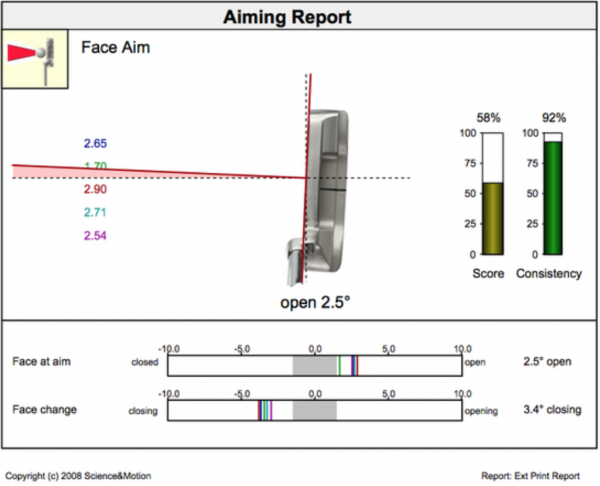
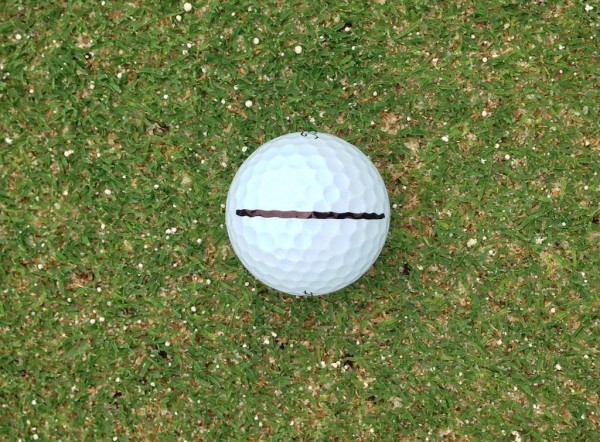
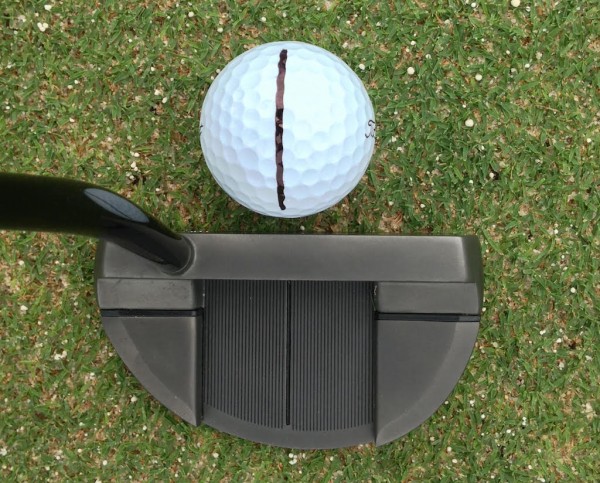
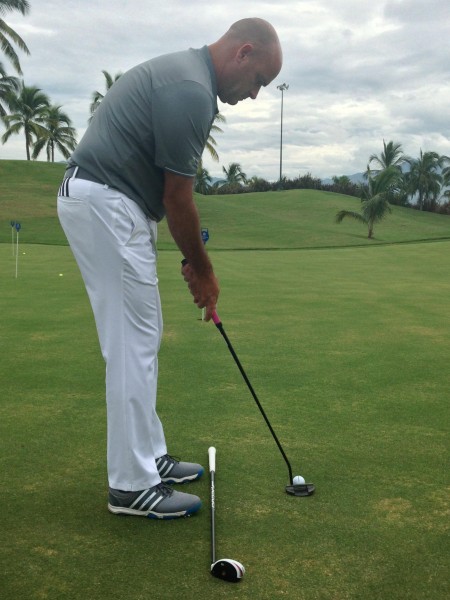
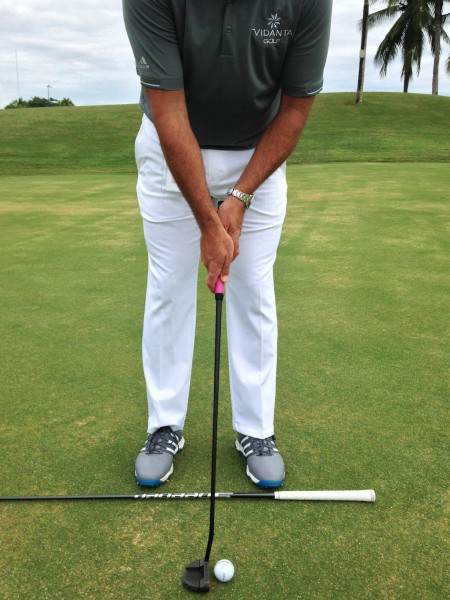
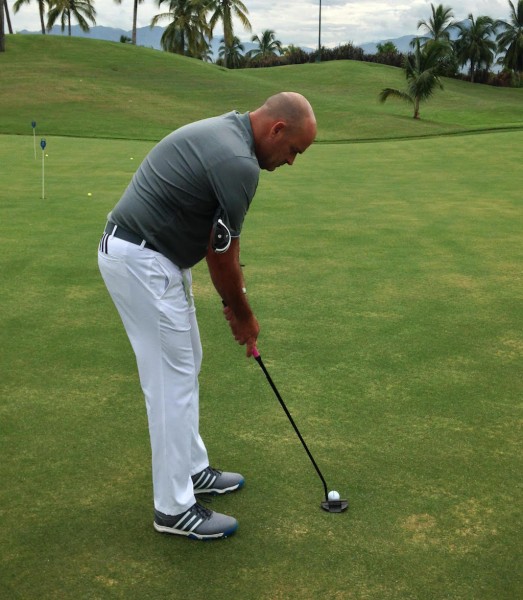
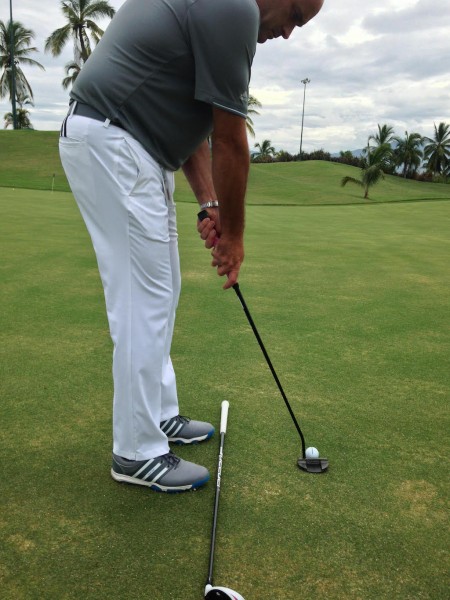
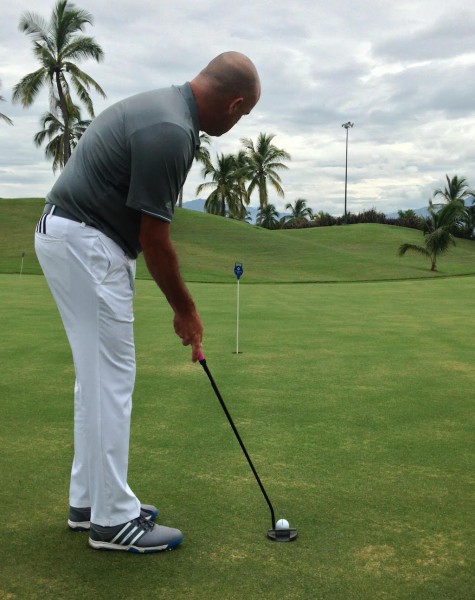
















brian watts
Feb 2, 2017 at 2:42 pm
Like the article. what putter is in featured in this ?????
Bob Pegram
Jul 15, 2016 at 5:46 pm
The touring pro who aims his putter 2.5 degrees to the right at address has an interesting statistic shown on the SAM Putt Lab screenshot. His consistency is 92 percent. In other words, although his alignment is way off, he does it the same way almost every time and so must have a compensating move that he does just about every time.
That same peculiarity explains the variety of full swings on tour. Everybody’s anatomy is different and so our tendencies vary. A lot of practice will tell us where to compensate (but starting with what Tom shows is a good foundation to build on).
The touring pro may have an eye alignment issue that he has learned to allow for.
Killer
Nov 25, 2015 at 2:06 pm
Putt with a string over your putting line. Great at home or even at the course when no one is around the practice green. Allows you to learn what straight looks and feels like. When you are ready to putt, think target, target, target, don’t sweat the small stuff, everything else!
Scott
Nov 24, 2015 at 9:49 am
thanks Tom, something to work on this winter
Steve
Nov 22, 2015 at 8:49 am
Nice edit taking negative reviews away
Andy W
Nov 21, 2015 at 2:47 pm
Great article on getting the ball rolling on the intended line at hopefully the proper speed. But what if your “intended line” isn’t the correct line to hole the putt? The idea is to actually make putts, right? Or at least have a chance. Best of both worlds happens with the P&SI-EGOS..
Christestrogen
Nov 21, 2015 at 10:02 am
Another A+++ article…..
You are on a roll…..pun intended
-Christosterone
Wallace
Nov 20, 2015 at 5:06 pm
Tom, this is a great article with good information. Very few people can properly line up a putter. And it doesn’t have to slow down play. Just be ready and put the ball down the way you want it. I wish some of these people knew how hard a Trackman University course is. Keep up the good work and thanks for feeding this site with great content.
Don
Nov 20, 2015 at 4:38 pm
There’s nothing more frustrating than waiting around while a golfer aligns, then re-aligns, the line on their ball before putting. This “tip” promotes more slow play than it improves a golfer’s putting.
TAKE THE DAM LINE OFF THE BALL. And, keep up the pace of play.
Bert
Nov 21, 2015 at 6:42 pm
+2 play weekly with a golfer who repeatedly does this; please attend the flag-stick while line up the line on my ball for my 10 foot putt. Then you remove the flag-stick and after they miss the putt, they go through the same routine again aligning up the stupid line on the ball. I doubt they ever read the contour of the green, grain, or just how the ball will roll. The USGA and R&A should have addressed for the 2016 Revision. It’s slow play and torture to those in the same group.
Stretch
Nov 20, 2015 at 4:00 pm
A lot of shanks for a direction for the average player to help improve.
Having been a land surveyor I cannot line a line on the ball perfect enough to satisfy a need for extreme accuracy.
Lining up body angles does help the arms swing the shaft in plane with the aim line. How ever the most important body part to get lined up is the eye line. The best example is Jack Nicklaus who had every body line way open and the body mass behind the ball. This let him shove the putter down the line as well as bottom out at Impact which put the magic roll on the ball.
Rich
Nov 20, 2015 at 3:35 pm
When I see a player with a big line on the side of their ball playing in my group, I know I’m in for a slow day on the course. Our club champion does this and he is the slowest player on the greens I have ever seen. EVERY putt gets lined up with the stupid line! It’s painful!
Bob Jones
Nov 25, 2015 at 3:36 pm
I played with a guy who was bent down like forever tweaking the line on his ball, and it was a 60-foot putt! The ball ran two feet left of the hole and ended up ten feet past. Oh, well…
Jang Han
Nov 20, 2015 at 1:08 pm
Good tips from the melon head guy!
alanp
Nov 20, 2015 at 12:42 pm
thanks for the article. there is alot of merit to your last point. next time do an article on how not to be a negative person and suck at life. seems like thats all these people know how to do
Scott
Nov 24, 2015 at 9:53 am
+1
Chris
Nov 20, 2015 at 10:38 am
Good info here! And that is a really nice looking putter!
Jimmeh
Nov 20, 2015 at 2:37 am
Something else that might work is making sure your dominant eye is on top of the golf ball. That way when you look at your intended target (hole, line etc) there is no visual distortion from your (right eye in my case) being a couple of inches away
McPickens
Jan 4, 2017 at 7:09 pm
YES!
snowman
Nov 19, 2015 at 11:40 pm
What I’ve had some success with is looking TOWARD the hole (rather than zeroing in on the hole itself) but at the same time trusting my feet to set into proper position and then aligning my shoulders to my ‘foot line’ and starting the ball on a path that is parallel to my shoulder/foot alignment (make sense?). Eyes/brain/feet all work together to magically give you a good start line.
WP
Nov 19, 2015 at 7:38 pm
I personally find that having a line on the ball and my putter is A LOT worse than looking at no line/logo and a putter with a simple dot on top. I’ve tried the line technique and besides the fact that it never looks the same from a stance as it does when you aligned it, all the focusing on “lines” removes all feel from the process. Different strokes for different folks I suppose…
mike
Nov 19, 2015 at 8:52 pm
WP,
I agree with you 100% I’ve used many putter with different sight line and none worked. This year i went to a putter with just a Dot. My putting has improved 90% went from a 13 hcp to solid 8 hcp. I don’t put any markings/lines on my ball it’s worked for me so far.
Kevin
Nov 22, 2015 at 5:16 pm
Use the line and trust it. Easier to aim the ball from looking behind and it’s a different perspective when you look down at it. Aim it and then trust that line!
Sek
Nov 19, 2015 at 4:51 pm
What his putter model/Brand?
Thank
Aaron
Nov 19, 2015 at 6:38 pm
Looks like a blacked out TM Spider mallet. Maybe their new spider mallet.
Sek
Nov 19, 2015 at 7:18 pm
Aaron…Thanks
Dylan
Nov 20, 2015 at 9:32 am
it’s a ghost tour monte carlo. all blacked out
golfpro92
Dec 10, 2015 at 9:09 am
It’s a spider mallet 2.0. Wish I knew where he got that finish done!
Tom
Nov 19, 2015 at 1:44 pm
Seems like it’s worth tryin.
Steve
Nov 19, 2015 at 1:29 pm
Yes put a line on the ball, align it with the line on the putter, square shoulders, shaft inline with back forearm. Wow how do you think of this? This is going to change putting forever, all this new information.
dwc
Nov 19, 2015 at 1:45 pm
Come on man, don’t be that guy
prime21
Nov 19, 2015 at 2:17 pm
Too late, he WILL ALWAYS be THAT guy. Maybe someday Steve will bless us with an article that provides the secrets of golf, until then, he will simply remain the troll he is, waiting for an opportunity to unleash his attacks from his Mac, safely hidden from reality in his childhood bedroom where he still resides. Nice article Tom, EVERYONE could learn something from it.
Justin
Nov 19, 2015 at 1:47 pm
You missed the whole point. Did you read the title? It’s techniques for monitoring and figuring out if you are properly aligned. Most people don’t know what causes their shoulders to be open or closed or the causes of other faults.